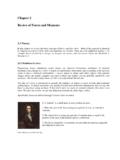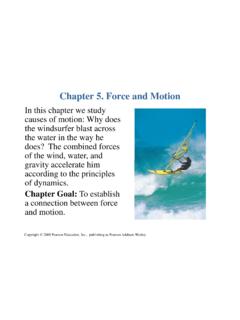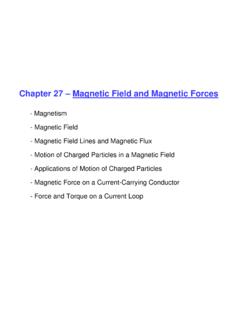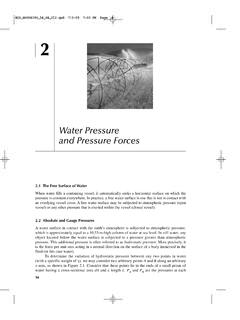Chapter 1 Forces
Found 10 free book(s)Chapter 2 Review of Forces and Moments
www.brown.edu2.1 Forces In this chapter we review the basic concepts of forces, and force laws. Most of this material is identical to material covered in EN030, and is provided here as a review. There are a few additional sections – for example forces exerted by a damper or dashpot, an inerter, and interatomic forces are discussed in Section 2.1.7.
Chapter 14 Intermolecular Forces
web.gccaz.eduClark, Smith (CC-BY-SA 4.0) GCC CHM 130 Chapter 14: IMF page 1 + - + - Chapter 14 – Intermolecular Forces 14.1 Types of Intermolecular Forces What is the difference between a bond and an intermolecular force? • Bonds: between atoms. This is the force that holds atoms together within a
Chapter 5. Force and Motion - Physics & Astronomy
physics.gsu.eduChapter 5. Force and Motion In this chapter we study causes of motion: Why does the windsurfer blast across the water in the way he does? The combined forces ... Major Forces: 1. Weight – gravitational force 2. Spring Force 3. Tension Force 4. Normal Force 5. Friction w mg=== r r T sp rrrr F kx==== n rrrr fk
CHAPTER 1 - PRINCIPLES OF FLIGHT
air.flyingway.commagnitude by its length. When an object is being acted upon by two or more forces, the combined effect of these forces may be represented by a resultant vector. After the vectors have been resolved, the resultant may be measured to determine the direction and magnitude of the combined forces. [Figure 1-7] Figure 1-7.— Basic Aerodynamic Vectors.
Chapter 4 Forces I
www2.tntech.eduChapter 4 Forces I 4.1 The Important Stuff 4.1.1 Newton’s First Law With Newton’s Laws we begin the study of how motion occurs in the real world. The study of the causes of motion is called dynamics, or mechanics. The relation between force and acceleration was given by Isaac Newton in his three laws of motion, which form the
Chapter 27 – Magnetic Field and Magnetic Forces
physics.ucf.edu1) A moving charge or collection of moving charges (e.g. electric current) produces a magnetic field. (Chap. 28). 2) A second current or charge responds to the magnetic field and experiences a magnetic force. (Chap. 27). 1. Magnetism Permanent magnets: exert forces on each other as well as on unmagnetized Fe pieces.
CHAPTER 1. SOIL PHYSICAL PROPERTIES
lawr.ucdavis.eduStructural stability or resistance of soil to disintegrative forces (rain, cultivation, soil swelling), depends on type of organic matter and its changing from low to high C/N as a result of microbial breakdown of OM: ... SSC107-Fall 2000 Chapter 1, Page - 18 - ...
Water Pressure and Pressure Forces
www.pearsonhighered.com16 Water Pressure and Pressure Forces Chap. 2 14.00 0 0 10 10 20 30 40 60 50 70 −10.33 20 30 40 50 60 70 80 Atmospheric pressure Absolute …
8.6 Drag Forces in Fluids - MIT OpenCourseWare
ocw.mit.edu1 . F A. ρ. v. 2 drag = C. D. (8.6.1) 2 The coefficient . C. D . is called the . drag coefficient, a dimensionless number that is a property of the object. Table 8.1 lists the drag coefficient for some simple shapes, (each of these objects has a Reynolds number of order 10. 4 ). The above model for air drag does n
Chapter Overview Chapter 1 – Notification and Orders
api.army.milChapter Overview Chapter 1 – Notification and Orders: Discusses the preparation and types of orders used to mobilize/employ/deploy military and civilian personnel (includes installation/unit requirements and procedures for extensions, and sources of manpower. Chapter 2 – Mobilization of the Force: Discusses procedures for mobilizing Reserve









